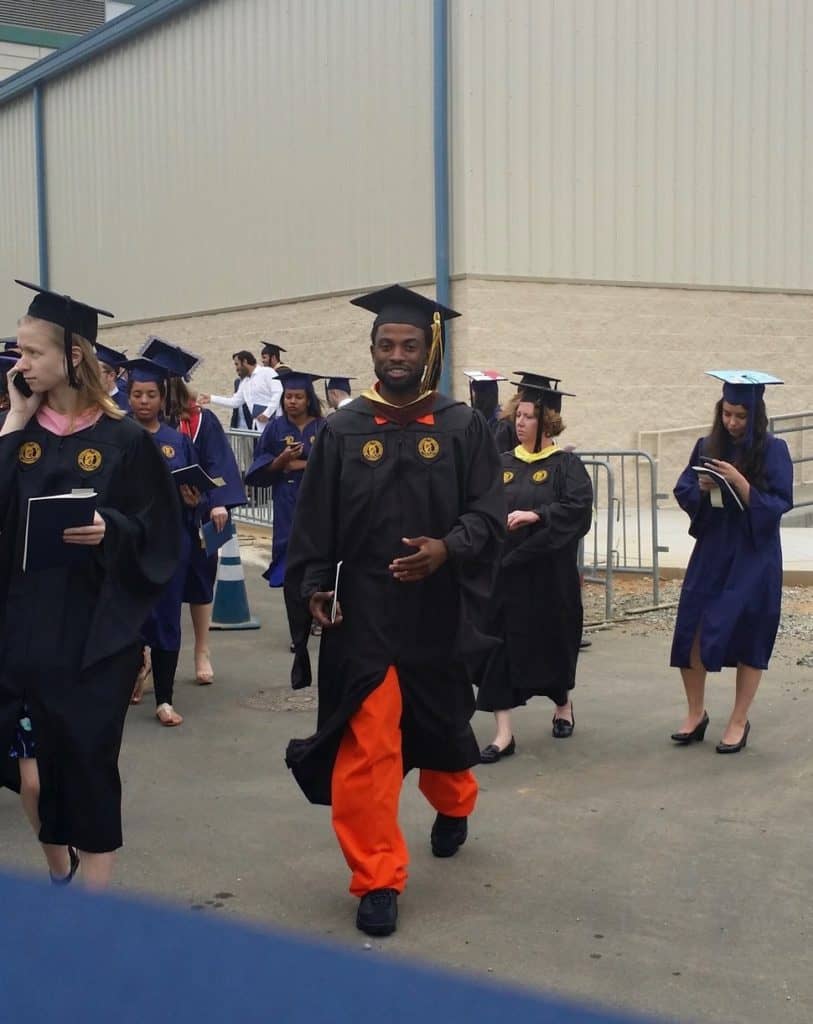
It was 2012 when artist Sherrill Roland received a call from a D.C. detective saying that there was a warrant for his arrest and that it was advised that he turn himself into the D.C. police station. To say that Roland was floored would be an understatement; he had just spent the summer working in D.C. and didn’t even know the person accusing him of the crime. Since Roland was already about to start grad school at the University of North Carolina, Greensboro to get his Master’s in Art, he wasn’t even in the area and the detective informed him that an indictment would be delivered to him.
Roland tried to focus on the school year ahead of him while communicating with lawyers and building his case, and nine months later the indictment arrived. In October of 2013, he was found guilty of four misdemeanors for a crime that hasn’t been named and he was taken to the Central Detention Facility in D.C.
“One minute you’re free and the next they’re taking your clothes and you’re standing naked in front of three correctional officers, other prisoners in cells around you. It was unbelievable to me…and such a heartbreaking thing…to see the world in the light I had seen it, where I could tell the truth and be punished for it,” Roland recalled in an interview with Yes Weekly.
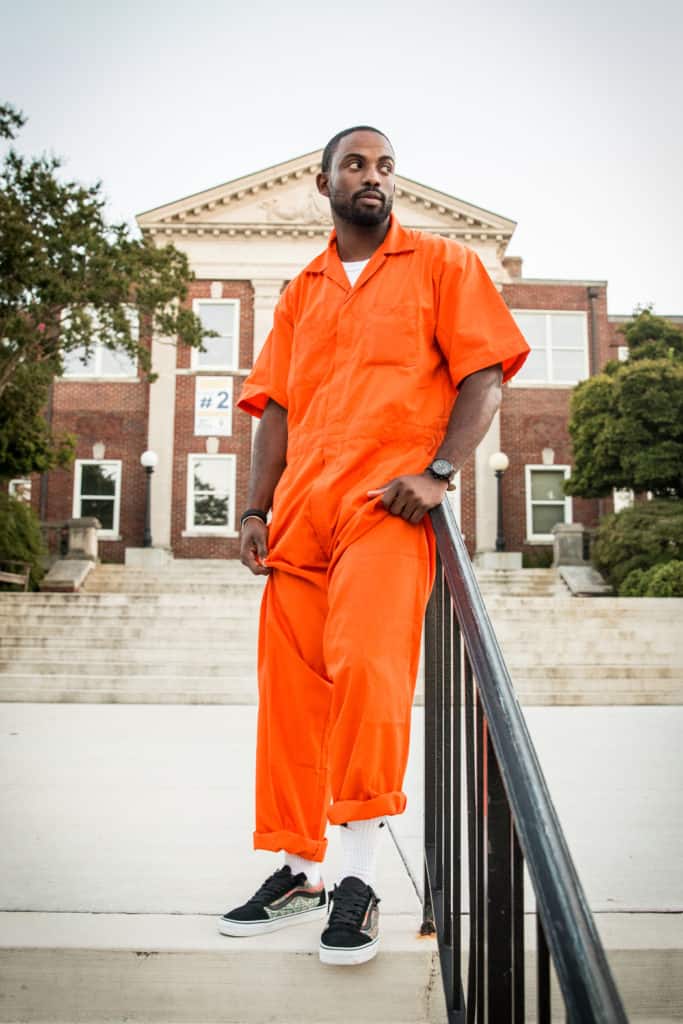
The D.C. City Jail has been described as a “human rights disaster,” with looming issues that include structural problems like mold and crumbling walls. A 2015 report from Washington Lawyer’s Rights Committee for Civil Rights and Urban Affairs found that the “appalling conditions of confinement in D.C. prison facilities especially in light of their disproportionate impact on African -Americans, are a key criminal justice and civil rights issue in Washington, DC.”
While in jail, Roland sometimes didn’t leave his cell for days at a time and on most days was kept inside for 23 hours. He burned through books, one of which wound up being a forbidden book called “The New Jim Crow: Mass Incarceration in the Age of Colorblindness” by Michelle Alexander. It talked about how America has used the mass incarceration of young, black males as an instrument of oppression, and served as the fuel for Roland’s last project for art school.
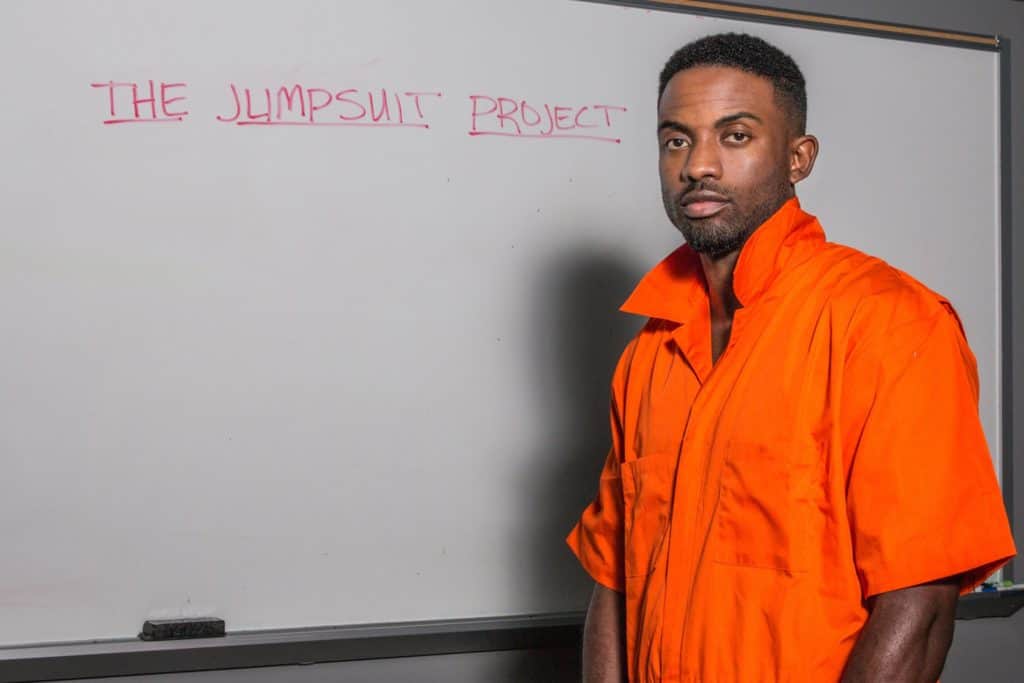
Roland served 10 months of his 13-month sentence before being released early for good behavior but he had to stay in the D.C. area because he was still on probation. In April of 2015, new evidence emerged that proved Roland was innocent, causing the record of his conviction and imprisonment to be sealed forever.
“When you’re released, you’re immediately faced with what you’re going to say to people. Not everyone knows what happened, not everyone knows you’ve been in jail. Do you tell people, do you hedge? How honest can I be, how much do I hide? You have to face the questions every day,” Roland said.
As he grappled with how to be out in the real world and who he was as a person, the idea behind The Jumpsuit Project began to form. On an encounter with his former art professor, he laid out his general idea for the project and the two talked details as the professor encouraged him. He then decided to re-enroll at UNC Greensboro and finish the Master’s program. Roland started school on the same day that he was released from jail 2 years prior.
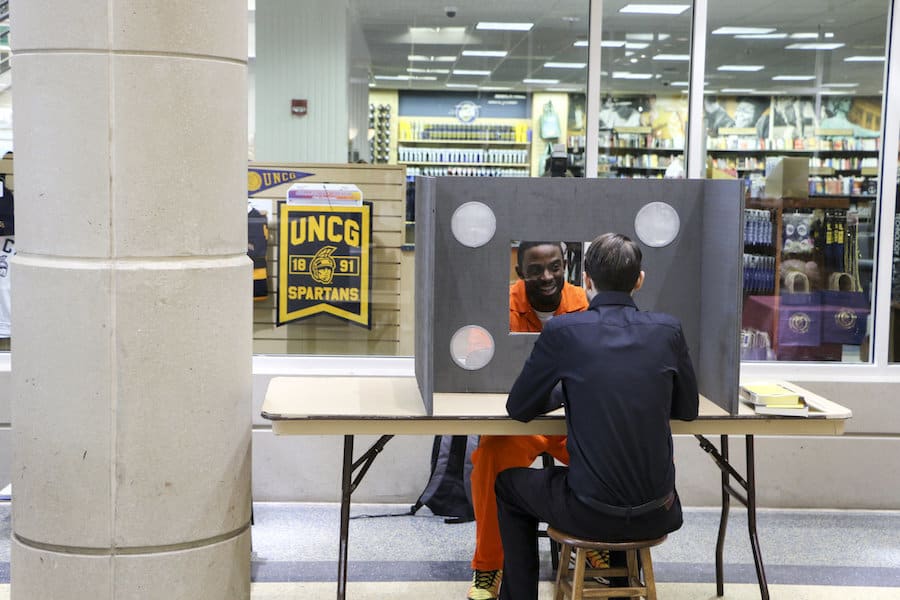
Roland explained his project to Yes Weekly:
“In terms of my project, my studio is my cell. The Gatewood Art Building is my cell block. In the jail, whenever you moved off your block—to go to church, to see your lawyer—you couldn’t stop along the way. You had to go directly there. So, whenever I leave Gatewood, my block, I can’t hesitate until I reach another building. If someone wants to talk to me, ask me a question, they have to walk with me. I can’t stop.
“I want to initiate a conversation. I want to say, Look, I was a student here and I thought the world was one way. I thought I was in control then this thing happened to me. We live in a certain world, but there are other things going on. There are things we never see. Things I never saw.
“I want to say, you think it can’t happen to you? I was you and you could be me. These things happen every day. The reality of the world once you leave this place [UNCG] is not what you think it is.”
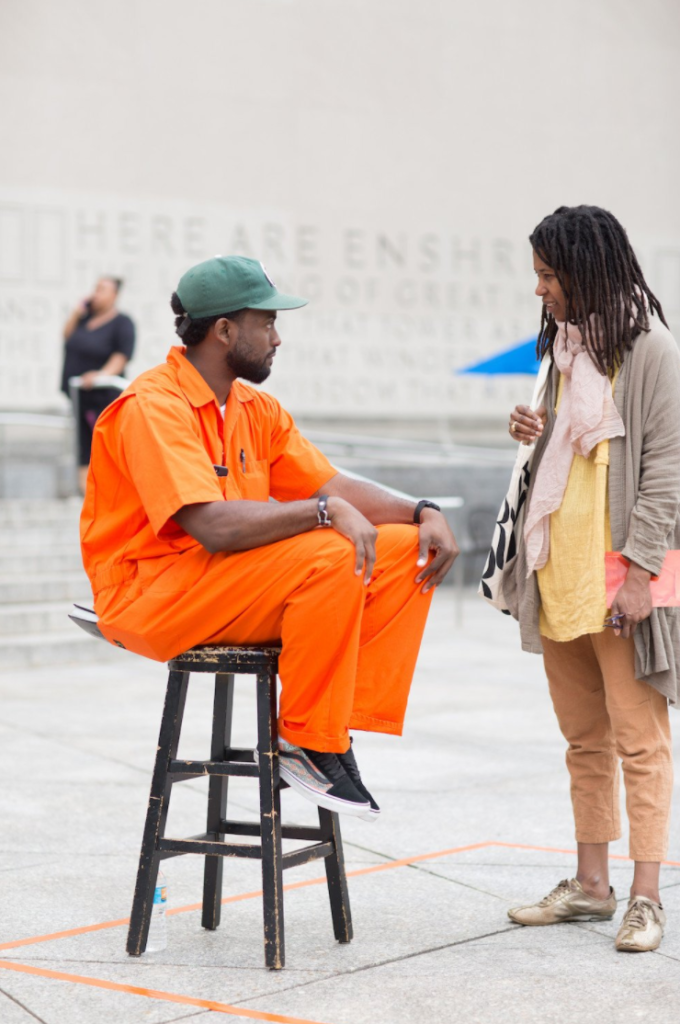
He also would sometimes put a small booth in the hallway for 45 minutes where people could talk to him, mimicking the visiting hours that inmates were allowed. The art student’s professors constantly checked in with him to make sure that he was doing okay, as they were always worried about how much Roland had to bare his soul and whether someone would make a mistake based on his outfit and accuse him of another crime. Roland informed the campus police before the start of the project in order to prevent this from occurring.
Incarceration changed Roland in ways he could never have foreseen. His idea of who he was, what America is like, and the purpose of art all dramatically shifted into who he is today. As a person who used to make art for himself as a form of expression, he now is using his personal experience to make art for others and expose a deep-seated problem occurring in the U.S.
